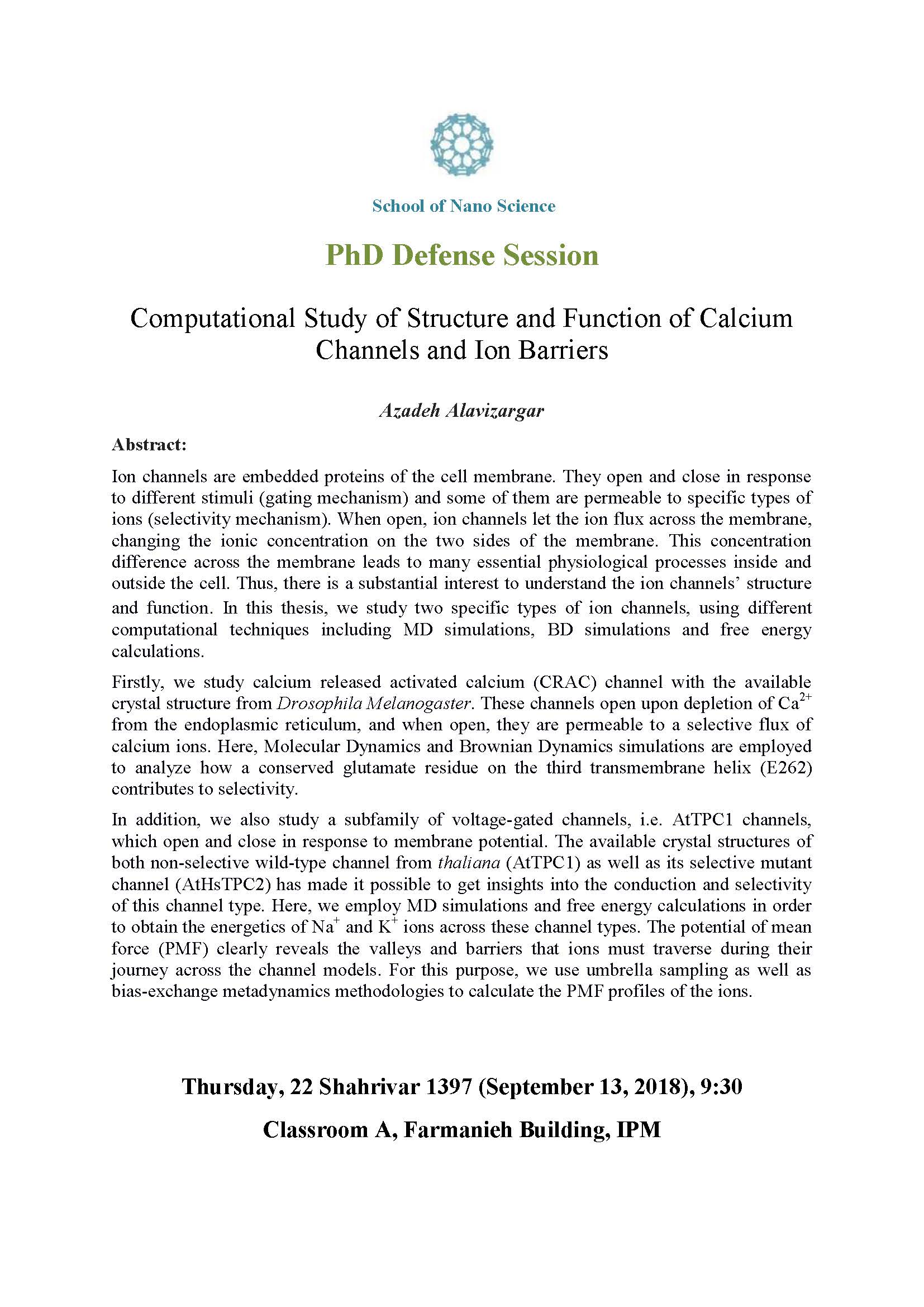| | Computational Study of Structure and Function of Calcium Channels and Ion Barriers
Abstract:
Ion channels are embedded proteins of the cell membrane. They open and close in response to different stimuli (gating mechanism) and some of them are permeable to specific types of ions (selectivity mechanism). When open, ion channels let the ion flux across the membrane, changing the ionic concentration on the two sides of the membrane. This concentration difference across the membrane leads to many essential physiological processes inside and outside the cell. Thus, there is a substantial interest to understand the ion channels, structure and function. In this thesis, we study two specific types of ion channels, using different computational techniques including MD simulations, BD simulations and free energy calculations.
Firstly, we study calcium released activated calcium (CRAC) channel with the available crystal structure from Drosophila Melanogaster. These channels open upon depletion of Ca2+ from the endoplasmic reticulum, and when open, they are permeable to a selective flux of calcium ions. Here, Molecular Dynamics and Brownian Dynamics simulations are employed to analyze how a conserved glutamate residue on the third transmembrane helix (E262) contributes to selectivity.
In addition, we also study a subfamily of voltage-gated channels, i.e. AtTPC1 channels, which open and close in response to membrane potential. The available crystal structures of both non-selective wild-type channel from thaliana (AtTPC1) as well as its selective mutant channel (AtHsTPC2) has made it possible to get insights into the conduction and selectivity of this channel type. Here, we employ MD simulations and free energy calculations in order to obtain the energetics of Na+ and K+ ions across these channel types. The potential of mean force (PMF) clearly reveals the valleys and barriers that ions must traverse during their journey across the channel models. For this purpose, we use umbrella sampling as well as bias-exchange metadynamics methodologies to calculate the PMF profiles of the ions.
Speaker:
Azadeh Alavizargar
Date:
13 September 2018
Time:
09:30
Venue:
Farmaniyeh Building, Classroom A

| |
|